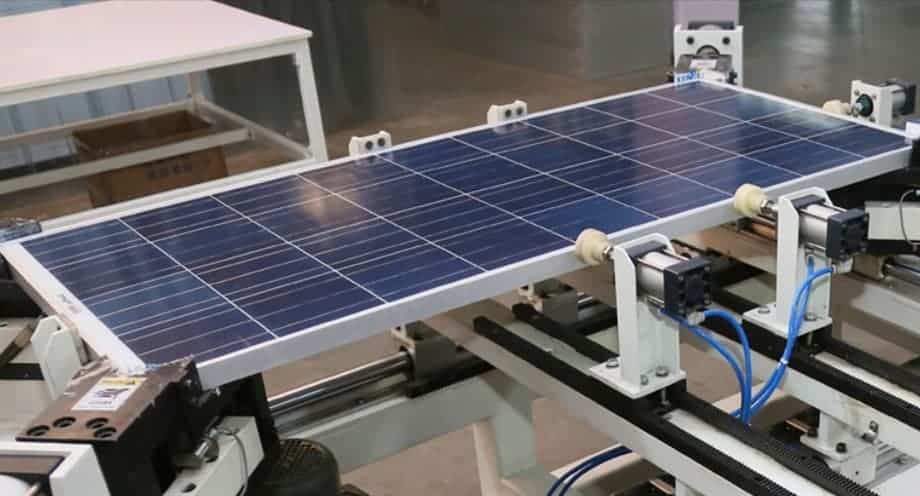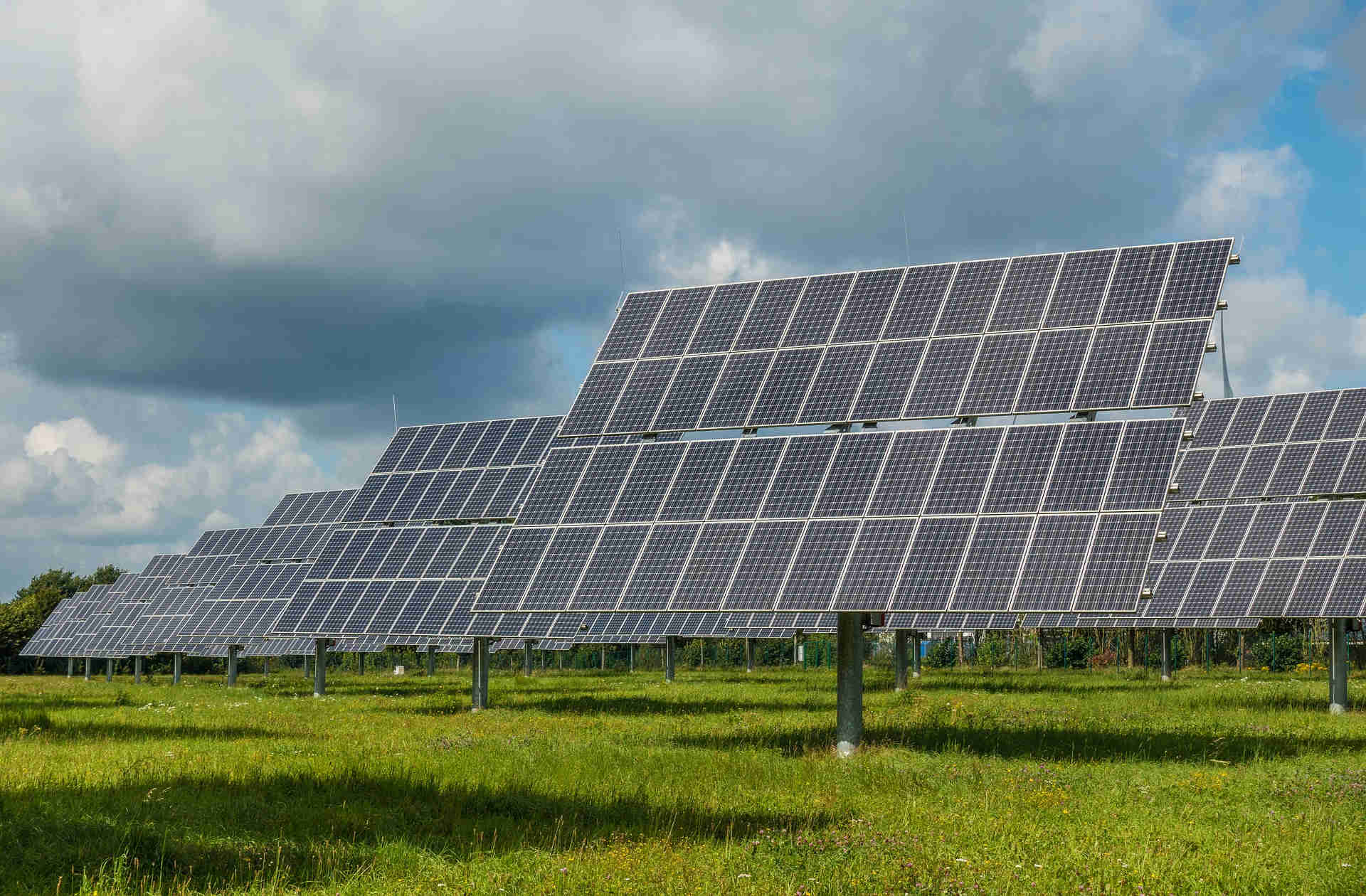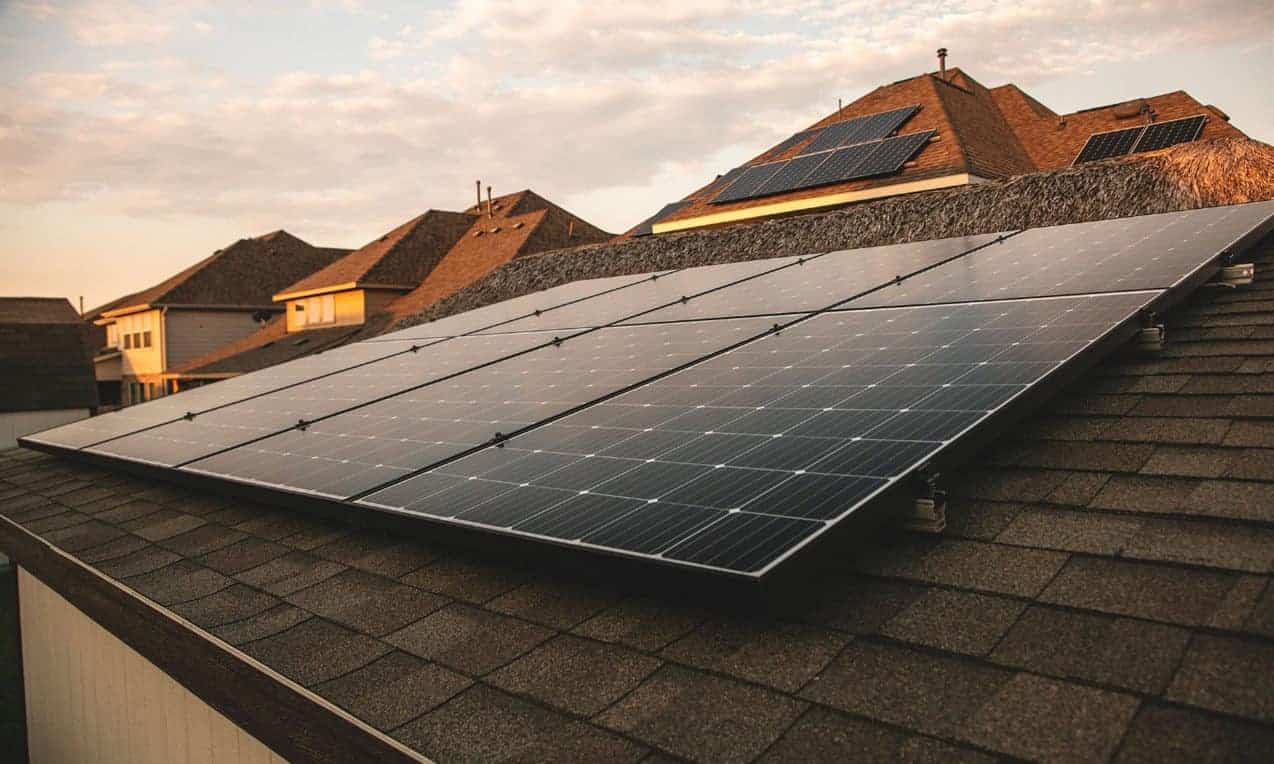Are you worried about the extra weight solar panels add to your roof? Along with space considerations, it’s important to ensure your roof can support the weight and to know how much solar panels weigh.
Solar panels weigh between 33-50 pounds on average. A solar panel can add up to 3 pounds per square foot. Adding the mounting components can increase this weight to 4 pounds. The panel’s size, output, and material can affect its weight.
This article breaks down all the factors affecting the panel’s weight. It also explains how to determine if your roof can support solar panels.
What Affects Solar Panel Weight?
Not all solar panels are the same. They come in different types. And that affects their weight. These factors determine solar panels’ weight:
Material
Most solar panel cells are made of silicon. They fall into three main categories:
- Monocrystalline
- Polycrystalline
- Thin film
Monocrystalline panels involve a single silicon wafer. Then, they’re cut into smaller wafers to fit into the target panel. They’re black and the most efficient.
Polycrystalline panels are silicon crystals melted together. They form the wafer that creates the individual panels. They’re blue and less efficient than mono panels.
Thin film panels are light, thin, and flexible. So, they’re mostly used in portable designs. These films are a few micrometers thick. They are placed on a glass pane. They’re made of different materials, including:
- Amorphous silicon
- Cadmium telluride
- Copper indium gallium diselenide
- Organic photovoltaic
Thin film panels are the least efficient. But they’re the lightest.
The solar panels’ material affects its weight. So, we can say that thin film panels are the lightest. But here’s another factor: efficiency. Thin-film panels are the lightest. But they’re not as efficient. So, you need more of them to get the same output. The higher the number of panels, the heavier.
Output
Each solar cell may have a fixed weight. But the final assembly can weigh differently. One of the main factors that affect the final weight is the output. How much energy do you want to generate daily?
Solar panels come with varying outputs. They range between 250W and 450W. So, suppose your panel generates 1.8 kWh a day, and you need 500 kWh a month. In that case, you need around 10 panels. You should also add 4 panels to make up for energy loss.
This example shows that the final weight of your panel depends on many factors, including
- Output
- Usage
- Energy loss
Dimensions
Solar panel size may not affect weight considerably. That’s because most panels come in standard dimensions. Home-use panels are typically 65” by 39”. Commercial panels are 78” by 39”.
The number of cells also affects the dimensions. Typically, each panel has 60 cells. They’re arranged in 6 by 10 grids. But this number can vary between 8 and 96. Commercial panels have 72 cells.
Each cell is typically 6” by 6”. But these sizes can vary by brand. Naturally, the larger the panel, the heavier.
Brand
There’s no specific standard for the weight of solar panels in the industry. So different brands may produce panels of different weights. They have varying construction methods and materials. They can also use different numbers of cells in their grids.
These PV cells are mounted on metal sheets. They must be strong enough to withstand the sun and other harsh elements. So, they add significant weight to the panel. And the metal type can change the weight. Most manufacturers use aluminum. It’s light but strong.
In addition to the metal back sheet, solar panels have a layer of tampered glass on top. It protects the cells from elements. This layer also adds extra weight.
Here’s a breakdown of popular residential brands and their specs.
| Brand | No. of Cells | Dimension | Weight |
| LG | 60 | 66.9” x 40” | 38 lbs (17.5 kg) |
| SunPower | 66
72 96 |
65” x 39” | 33 lbs (15 kg)
41 lbs (18.6 kg) 46.5 lbs (21.1 kg) |
| Canadian Solar | 120 | 69.5” x 41.3” | 46.5 lbs (21.1 kg) |
| Hyundai | 132 half-cut cells | 40” x 75” | 46.5 (21.1 kg) |
| Axitec | 108 | 67” x 44” | 48 lbs (21.8 kg) |
Commercial vs. Residential Solar Panels
Solar panels come in residential and commercial types. Commercial panels weigh more. They weigh between 50 and 60 pounds. That’s because they’re bigger. These panels are designed to power much larger areas. They also need higher efficiencies. So they contain more cells.
A commercial panel has an average of 72 cells. Each grid is typically 78” x 39”. But both panel types have the same depth. Depth refers to the panel’s thickness. It’s determined by the metal frame and the cells’ thickness. Most panels range between 1.25” and 1.6” in thickness, with an average of 1.5”.
How Much Weight Does a Solar Panel Add to a Roof?
Considering the solar panel’s roof is essential before installation. But it’s not enough. Solar panels need mounting equipment that adds extra weight to the entire array.
Suppose you need 20 panels, and each panel weighs 40 pounds. In that case, the entire array weighs 800 pounds.
Then, you should factor in the mounting rack’s weight. The entire array generally adds 2-4 pounds per square foot. This includes the panels and the mounting equipment. If your array covers 230 square feet, it will add 920 pounds to your roof. That’s the maximum amount for this square footage.
How To Determine If Your Roof Supports the Solar Panel
Most roofs can generally handle the weight added by solar panels. It spreads over a large area. Plus, roofs are designed to tolerate heavier weights. But everything depends on your roof construction. Besides, you should consider the added weight of snow if you live in a cold climate.
That’s a bigger issue if your roof is sloped. Flat roofs can handle bigger weights and are flexible for installation. So you should ensure your roof can tolerate the added weight.
These are the factors that determine your roof’s strength:
Roof Age
If your roof is old, it may not be strong for the added weight. If it has cracks or other damages, you should first repair them.
The installers inspect your roof to ensure it’s ready for the project. And it makes sense to do these repairs before adding the solar panel. Doing so after installing the system will increase your costs. You must remove the array, repair the roof, and reinstall the solar panel.
Solar Panel Placement
Your roof may be strong enough for the solar panel. But the solar panel’s placement also matters. It must be installed at a spot with the most sun exposure and the best angle.
So, you should ensure the best spot on your roof has enough space to handle the panel’s weight. This spot is south-facing in most cases.
What To Do If the Roof Is Not Strong for the Solar Panel?
Determining roof strength is not your job. Your installation company considers many factors to determine the roof’s structural integrity. These include:
- Local climate
- Roof type and material
- Roof slope
- Wind speed in your area
- Other technical features
Reputable companies hire third-party inspectors to evaluate your roof’s structural integrity. They ensure your roof complies with the local load requirements.
According to experts, most modern roofs can support solar panels. But if your roof doesn’t, you’re not out of options. Here’s what you can do:
Install it on another roof. These roofs can be anything, including a barn, covered driveway, garage, or shed. You can install solar panels if it’s big and strong enough.
Alternative panels. Solar companies can offer you lightweight alternatives. These include portable panels or solar shingles. Thin film panels are a viable option. They’re thin, flexible, and light. They may not be as efficient, but they can be a decent alternative.
Install them on the ground. You don’t need to install your panels on the roof. If your space is enough, you can use ground-mounted panels.
Frequently Asked Questions
How heavy is a 400w solar panel?
A 400W solar panel can come in different sizes and cell counts. Different manufacturers offer varying weights. A standard 400W solar panel weighs between 35 and 50 pounds.
| Brand | Weight (lbs) | Panel Rating |
|---|---|---|
| LG | 40.8 | 400W |
| SunPower | 41.9 | 400W |
| Canadian Solar | 39.7 | 400W |
| Hyundai | 43.0 | 400W |
| Axitec | 41.5 | 400W |
How big is a 400-watt panel?
A panel size depends on its material, efficiency, and brand. But a 400W panel can be 75” x 45” on average. LG’s 400W panels are 80” x 40”. SunPower’s 400W panels are 66” x 39”.
How much does a 550-watt solar panel weigh in kg?
A solar panel’s weight depends on size, material, and brand. It typically weighs between 22 and 25 kg. If it has monocrystalline cells, it can be lighter as the number of cells is lower thanks to the higher efficiency.
| Brand | Panel Rating | Weight (kg) |
|---|---|---|
| LG | 550W | 22.7 |
| SunPower | 550W | 23.3 |
| Canadian Solar | 550W | 23.0 |
| Hyundai | 550W | 24.1 |
| Axitec | 550W | 22.9 |
| First Solar | 550W | 22.5 |
| Trina Solar | 550W | 23.2 |
Conclusion
Most standard solar panels come in 60-cell grids and weigh between 33 and 50 pounds, although panels can vary greatly in weight and size.
Commercial panels are heavier than residential types because they have a higher output and cover larger areas.
Most modern roofs can support solar panels. However, a professional inspection determines your roof’s structural integrity and gives you a certificate to show it complies with local regulations.








